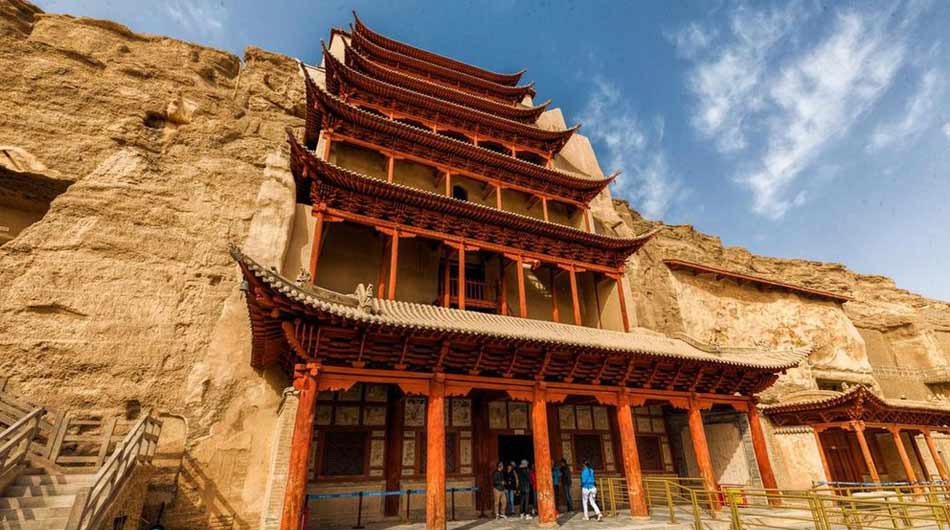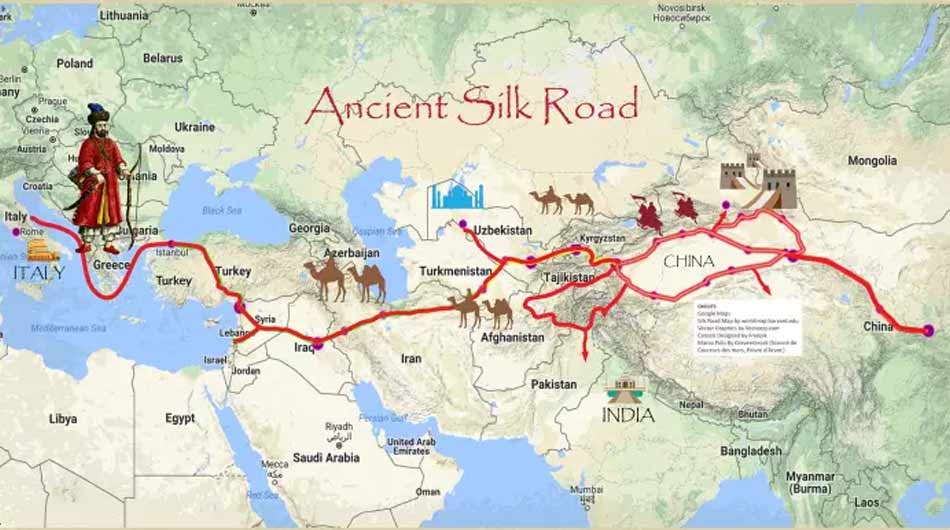The Silk Road: Iran’s Role in the Ancient Trade Route

In this article, we will explore the significance of Iran’s role in the Silk Road, its impact on trade and culture, and how it contributed to the development of the ancient world.
The Geography of the Silk Road: Iran as a Central Hub
Iran’s role in the Silk Road was largely shaped by its geographic position, located between China and the Mediterranean. The Silk Road consisted of various routes that spanned across vast deserts, mountains, and plains, with Iran acting as a bridge between East and West. Its major cities, such as Tehran, Isfahan, and Tabriz, served as pivotal trade centers where goods and cultures intersected. The Iranian Plateau, with its rugged landscape, connected Central Asia, the Indian subcontinent, and the Middle East, making it an essential part of the journey for merchants and travelers alike.
The Persian Empire, particularly under the Achaemenid Dynasty (550–330 BCE), established a sophisticated system of roads, including the Royal Road, which further enhanced Iran’s centrality in the Silk Road network. The Royal Road, stretching from Susa to Sardis, enabled faster communication and transportation across the empire, facilitating the flow of goods, services, and information.

Iran was more than just a transit point; it was an active participant in the exchange of goods along the Silk Road. Some of the most important goods that passed through or originated from Iran included:
Silk: While silk originated in China, it was one of the most highly coveted commodities transported through Iranian territory. Iranian merchants played a key role in its distribution, selling it to Roman, Byzantine, and other Western markets.
Spices: Spices such as saffron, cumin, and cardamom were traded along the Silk Road, with Iran serving as both a producer and a conduit for spices from India and Southeast Asia.
Precious Metals and Gems: Iran was rich in resources, and its mines produced gold, silver, and precious stones that were highly sought after by foreign merchants.
Persian Rugs: Persian carpets and rugs, renowned for their intricate designs and craftsmanship, were prized possessions among traders and elite buyers. These rugs became a symbol of luxury and status in many of the regions along the Silk Road.
Perfumes and Incense: Iran also exported perfumes, incense, and other luxury goods, contributing to the vibrant economy of the Silk Road.
Glassware and Pottery: Iranian artisans were skilled in producing high-quality glassware and ceramics, which were traded widely throughout the ancient world.

The Silk Road was not just a commercial enterprise; it was a significant channel for cultural, religious, and intellectual exchange. Iran’s position along the route made it a melting pot of diverse ideas and influences. Travelers, scholars, and religious figures passed through Iran, bringing with them philosophies and practices that left a lasting impact on the region.
Zoroastrianism and Religious Influence
Iran, the birthplace of Zoroastrianism, contributed its religious and philosophical ideas to the cultural dialogue along the Silk Road. Zoroastrianism, one of the world’s oldest monotheistic religions, influenced later Abrahamic faiths and philosophical traditions in the region. Alongside Zoroastrianism, the rise of Islam in the 7th century brought Iran into the fold of the Islamic Golden Age, during which the country became a center for scientific, philosophical, and artistic developments.
Iran also played a role in the spread of Buddhism. Iranian cities served as stopping points for Buddhist missionaries and travelers en route to China and Central Asia. Some of the earliest representations of Buddha in Central Asian art bear strong influences from Iranian artistic styles, particularly during the time of the Kushan Empire.
Art and Architecture
The blending of Persian art and architecture with influences from Greece, Rome, India, and China created a unique and enduring aesthetic that spread across the Silk Road. Persian miniatures, calligraphy, and metalwork found their way into Central Asia, while Persian architecture, with its majestic domes and intricate tilework, influenced the construction of mosques and palaces in distant regions.
The famous Sassanid silverware and luxury goods, including intricately designed vessels, also became a major export item along the Silk Road. Iranian artisans were renowned for their craftsmanship, and
Tags:Adventure holidays, Best time to travel to iran, best tour operator iran, Cultural sites of Iran, Culture of Iranian People, Economy of Travel, Holiday in Iran, Iran Architectural, iran attractions, Iran country, Iran cultural, iran destinations, Iran enriching experience, Iran sightseeing tours, iran Solo trip, iran tour, Iran tour packages, iran tourist attractions, Iran travel agency, iran travel expenses, Iran Travel Guide, Iran Travel Tips, Iranian culture, Iranian Hospitality, iranparadise, must-visit Iran, persia tour, Silk Road, Surfing In Iran, The Silk Road, top tourist destinations, travel to iran, Traveling to Iran, travelling to iran, trip to iran, vacation packages, visit iran, جاده ابریشم, درناگشت

